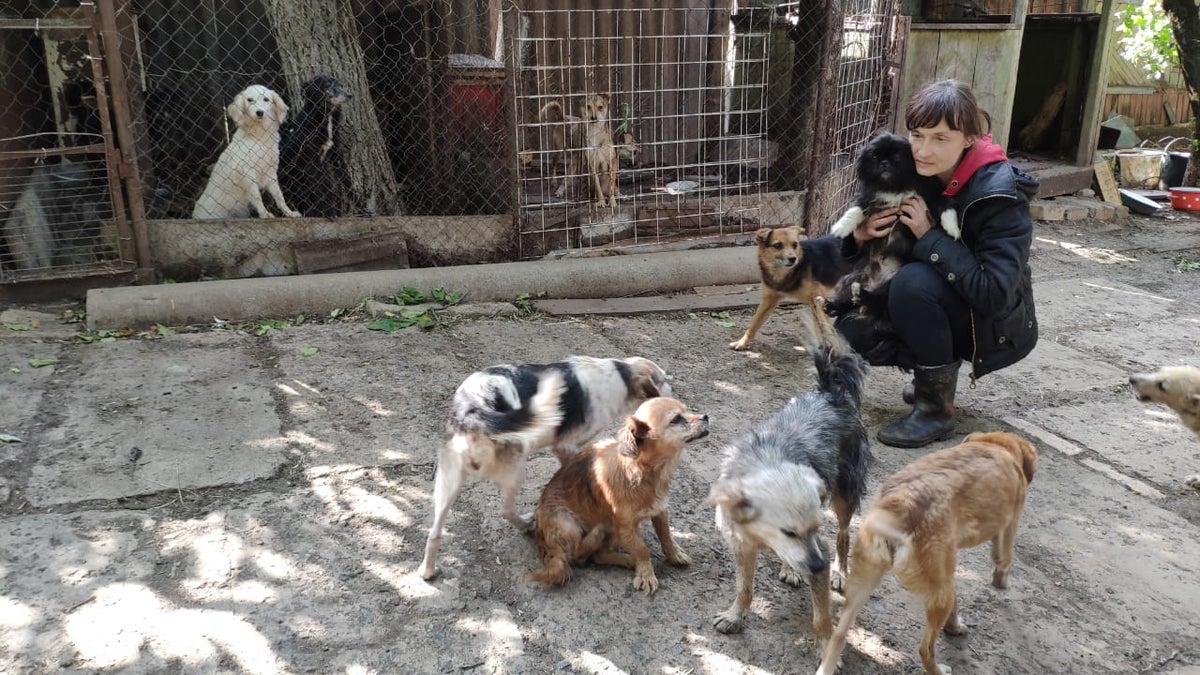
In the general store on the outskirts of Siversk, the shelves are mostly empty and the dwindling stock is sold by the owner at giveaway prices to customers in need. Locals gather from time to time on the porch outside to exchange news.
It is a nondescript building of no strategic significance, but it has repeatedly been targeted by the Russians. The reason for these attacks? Worker Igor Klimenko points at a Ukrainian flag flying on the roof.
Mortar rounds have whizzed past the shop ever since he put up the flag. “They have drones in the air and I’m sure they have seen it. Some people around here have asked me to take it down, but I’m not going to. Anyway, they are bad shots, they keep missing,” he says, gesturing towards holes in a field at the back.
Few of the buildings in Siversk have escaped the Russian attacks. This small town, away from the main urban centres, is on the front line in eastern Ukraine, and has been in the firing line ever since Vladimir Putin ordered his February invasion.
Siversk will be directly in the path of Russian troops if they manage to capture the twin cities of Lysychansk and Sievierodonetsk, thus seizing the whole of the Luhansk area to use as a launchpad for an assault on the rest of the Donbas.
It sits on the last main road connecting the Donbas capital, Kramatorsk, via the strategic city of Bakhmut, to Sievierodonetsk, 15 miles away.
All three bridges across the Siverskyi Donetsk River to Sievierodonetsk have been destroyed. Hundreds of civilians remain trapped at the Azot chemical plant in the city, with escape now seen as impossible. Also there, surrounded, are Ukrainian soldiers, resisting demands from the Kremlin to surrender.
There is deep apprehension that what happens to Sievierodonetsk could be a grim repeat of the disaster in the city of Mariupol – with troops taken captive, civilians deported to Russia, and a city left in ruins.
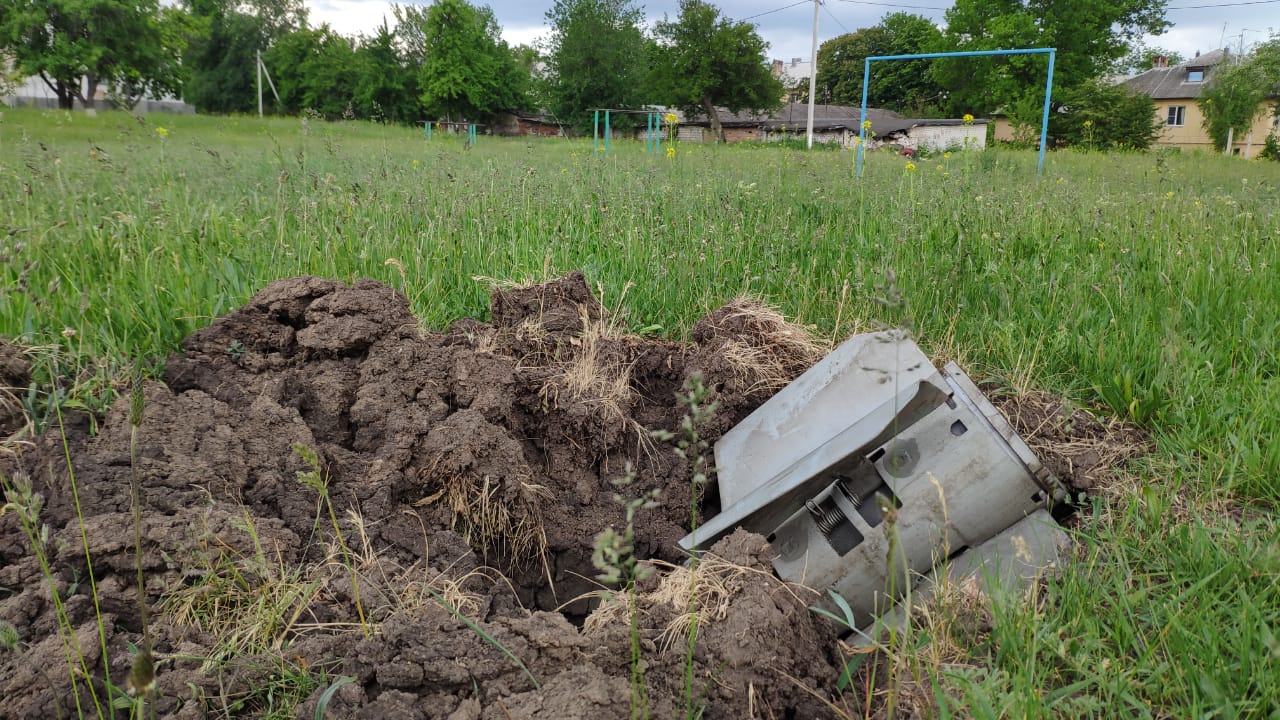
The residents left in Siversk are bracing themselves for the coming storm. And there is plenty of evidence of the suffering already inflicted on the town. A destroyed school, used as a shelter, where five people died in a bombing. A row of houses damaged by a missile strike, which killed another three. The acrid smoke from a plant where agricultural seeds were set on fire by shelling.
There has been no gas, no electricity, and no water for a month. Aid runs are irregular because of artillery fire on the road, and the lack of internet and telephone coverage means that it is difficult to know when and where distributions will take place. The town’s hospital, without power and extremely short of medicine, has turned its basement into a shelter. Around half of the population of 11,000 has left the town, but others are determined to stick it out.
“We are not running like those rats: we are staying. This is our home, our country; this is Ukraine, not Russia. That’ll never change,” declares Iryna outside a block of burnt-out apartments. “They are trying to drive out everyone from here, [and to] kill those who stay. They are making this place empty of people.”
There are frequent explosions in the background as she speaks. Quite a few blocks have taken direct hits, and residents spend their time in bunkers under buildings, which have been divided into sleeping cells. They gather outside during the day, when there is a lull in the fighting, to socialise – eating food cooked over open fires, built using the wood from cut-down trees – and take turns to visit people who are too ill or infirm to leave their homes.
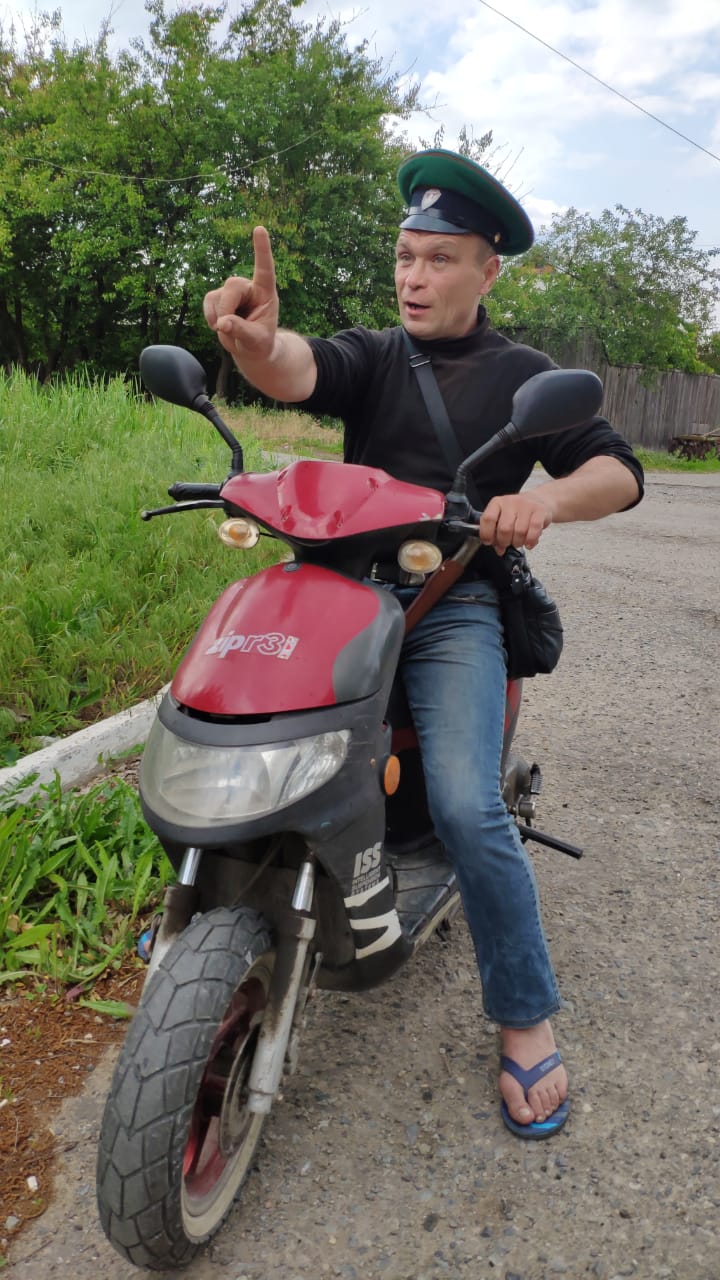
“We know the Russians are not far away. Lysychansk is close, Sievierodonetsk is just across the river. So we are not going to avoid the fighting here,” says Alla Oleneik, 67, whose home became uninhabitable after a missile strike.
“Putin wants the Donbas, we know that. We heard there are leaders in Europe who want to end the war by Ukraine giving up this area to the Russians,” she says. “But we are the ones who live here – and we are not prepared to just give up our land or become Russians. How can they expect us to accept them after the way they have behaved, killing and destroying?”
Sergei Kitsenko wants to show me a site of destruction nearby – a nursery school that was blown up, where he came close to being killed.
“I was walking by and I could hear the aeroplane – it was low and it got nearer and nearer. I sensed what was going to happen and I ran, but the next thing I knew was the bomb and being flung to the ground. It was as if someone had grabbed me and thrown me.
“Look at this,” he says, standing beside a crater 10ft deep and 15ft wide where a bomb has struck. “This place was used as a shelter. Luckily this happened during the day and so no one was here. The Russians could say that our soldiers were here, but we never saw them here; none were injured or killed.”
He adds: “It is strange to think that we used to live in peace with Russia once.”
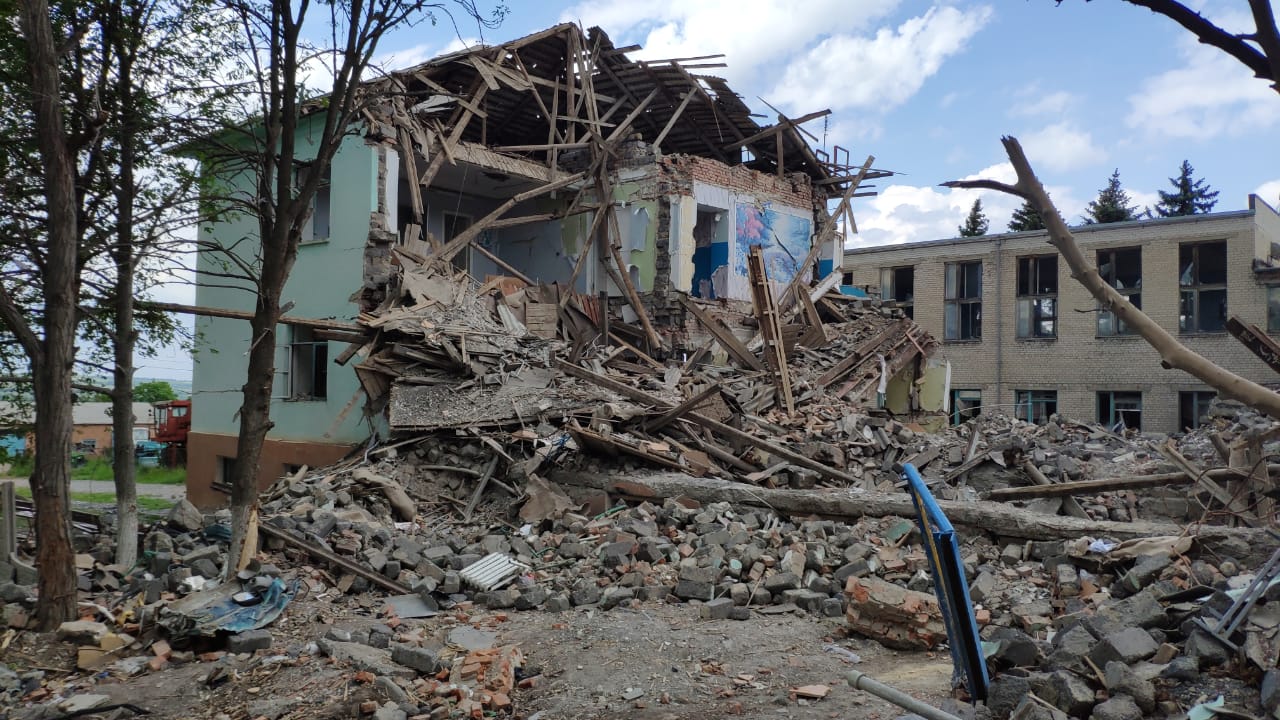
The signs of the ties that used to bind many are dotted around Siversk. Letters, in a house wrecked by bombing, from relations in St Petersburg; a memorial to soldiers from the town who died in serving the Soviet army in Afghanistan.
Alexei arrives on a motorcycle as the locals speak. He is in the uniform of a border guard on a commemoration day for his force – something he is determined to celebrate.
“We are in a war, but it is something I feel I need to do,” he says. “I have been in the Border Force for a long time; I made a lot of friends in that time. Some of them have died.”
Alexei shows the pristine condition of his ceremonial hat, which he first wore when Ukraine was still part of the USSR. “We try to keep up the traditions. I am from Siversk and I meet up with colleagues and friends here. I don’t know how much longer that will be possible; we are in a difficult time, and it’s going to get more difficult. More people will leave,” he says.
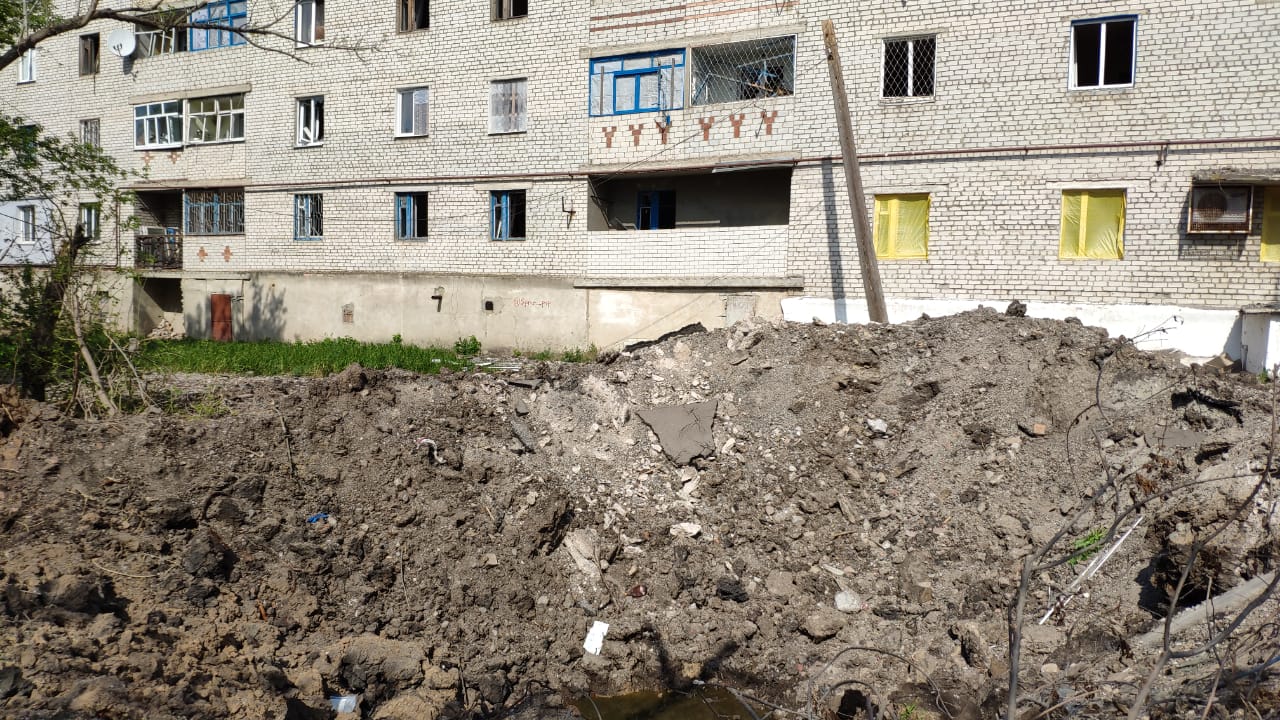
Marina Oleniuk says she would like to leave with her 10-year-old son, who is terrified of the violence around him.
“He spends most of his time in the basement. He has been very affected with what is going on. He wants us to get away desperately, but we have this big problem,” she says.
The problem is what to do with the 40 or so cats and dogs she has been looking after. They belonged to those who have fled the town, some of them from a building nearby that is now a pile of rubble. She asks her son to come out and talk. “I don’t like it here... all my friends have gone, I have no one to talk to. There are bombs all the time. It gets very frightening,” he says.
A mortar round lands somewhere close. The boy runs off to his place of refuge, the shelter.

“I must do something; this is not good for him at all,” Oleniuk says as she shakes her head.
A few days later, an animal charity contacted by The Independent moves the animals. Oleniuk leaves with her boy to stay with relations, away from the front line.
Other residents of Siversk stay on. “The situation is going to get worse, not better – we know that,” says Kitsenko. “But we have made our choice. We are civilians, not soldiers, I know. But this is our home, and we have made our stand here in our own way.”







